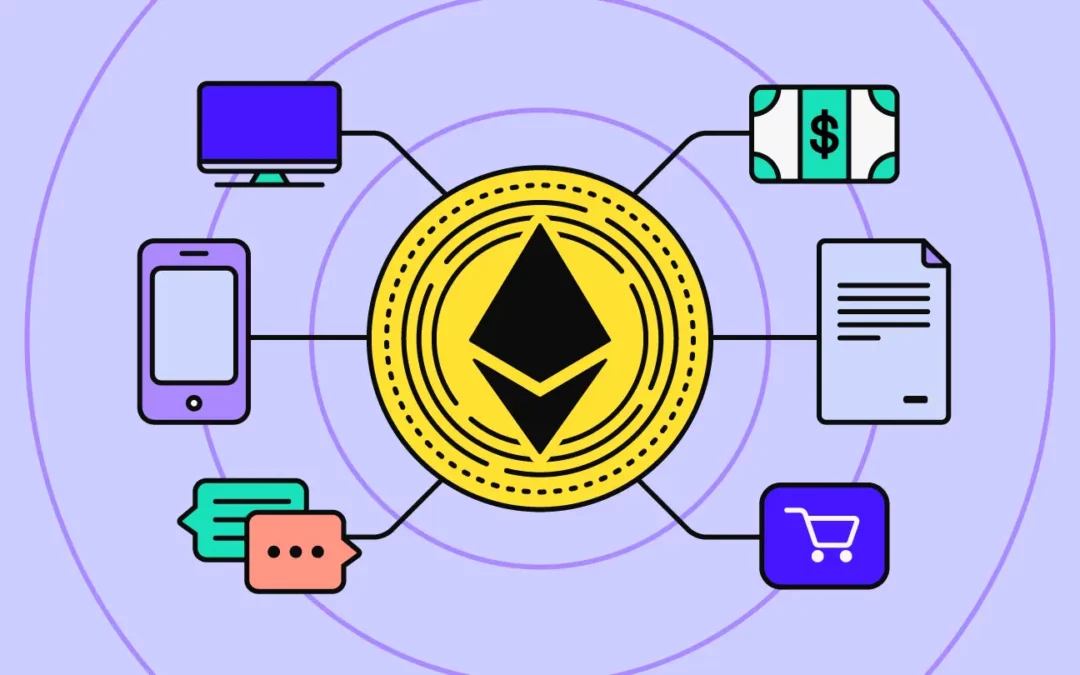Ethereum is more than just a cryptocurrency — it’s the foundation of a growing digital economy powered by decentralized apps, or dApps. These applications aren’t controlled by a single company or server. Instead, they run on Ethereum’s blockchain using smart contracts, which are self-executing pieces of code that automatically enforce rules and transactions.
So what kind of apps are built on Ethereum? The answer is: a little bit of everything. Let’s explore the main categories and real-world examples that are redefining the internet as we know it.
Decentralized Finance (DeFi) Apps
One of the most revolutionary uses of Ethereum is in finance. DeFi apps offer traditional financial services — like lending, borrowing, trading, and earning interest — but without banks or intermediaries. Everything is handled through smart contracts.
Popular examples:
- Uniswap – A decentralized exchange (DEX) for swapping tokens.
- Aave – A platform where you can lend or borrow crypto assets.
- Compound – Allows users to earn interest or take out loans in a decentralized way.
These apps are accessible 24/7, require no credit checks, and often offer better yields than traditional banks.
NFT Marketplaces and Games
Ethereum also powers the booming NFT (non-fungible token) market. These are unique digital items stored on the blockchain — and Ethereum was the first platform to make them popular.
Popular examples:
- OpenSea – The largest NFT marketplace.
- Axie Infinity – A blockchain-based game where players collect, breed, and battle creatures.
- Decentraland – A virtual world where users can buy land, build experiences, and trade items.
These platforms show how Ethereum is transforming ownership of art, collectibles, and even digital real estate.
Social and Content Platforms
Ethereum enables decentralized social media and content platforms where users own their data and earn directly from their contributions.
Examples include:
- Lens Protocol – A decentralized social graph that gives users control over their profiles and posts.
- Mirror – A Web3 publishing platform where writers can tokenize and sell their content.
- Audius – A decentralized music streaming service that rewards artists directly with crypto.
These apps challenge the dominance of big tech platforms and give more power to creators and communities.
Infrastructure and Identity Apps
Ethereum is also a hub for tools and infrastructure projects that support other dApps and help manage identity in Web3.
Some notable examples:
- ENS (Ethereum Name Service) – Lets users create simple human-readable addresses like “yourname.eth” instead of a long string of characters.
- Gnosis Safe – A smart contract wallet for securely managing crypto assets with multiple signers.
- Chainlink – A decentralized oracle network that brings real-world data into smart contracts.
These services make the Ethereum ecosystem easier to use and build on.
DAOs (Decentralized Autonomous Organizations)
Lastly, Ethereum is the birthplace of the DAO — organizations run entirely by code and governed by members through token voting.
Examples include:
- Aragon – Tools to build and manage DAOs.
- MakerDAO – Maintains the DAI stablecoin and is governed by token holders.
- Friends With Benefits (FWB) – A social DAO where membership is token-based.
DAOs represent a new way of organizing people and capital around shared goals, without a traditional corporate structure.
Final Thoughts
Ethereum is more than a blockchain — it’s a platform for innovation. From finance and art to identity and governance, the dApps built on Ethereum are laying the foundation for a more open, user-controlled internet.
As the ecosystem grows and Ethereum scales, we’ll see even more powerful and diverse apps emerge. If you’re curious about the future of the web, Ethereum is a great place to start.

